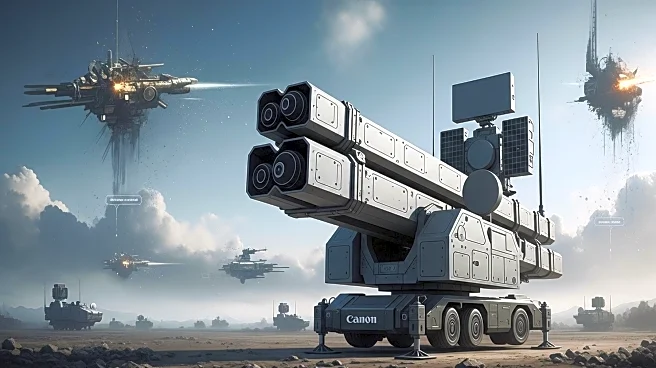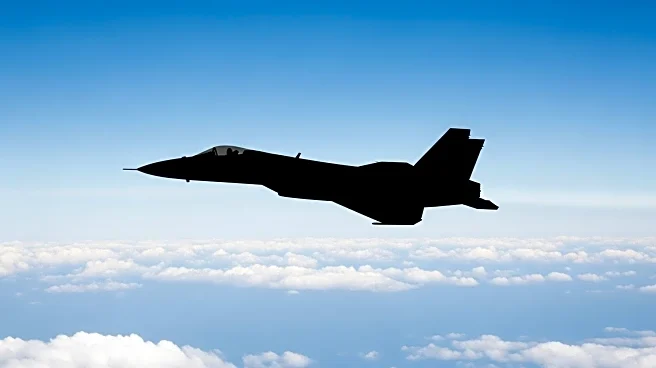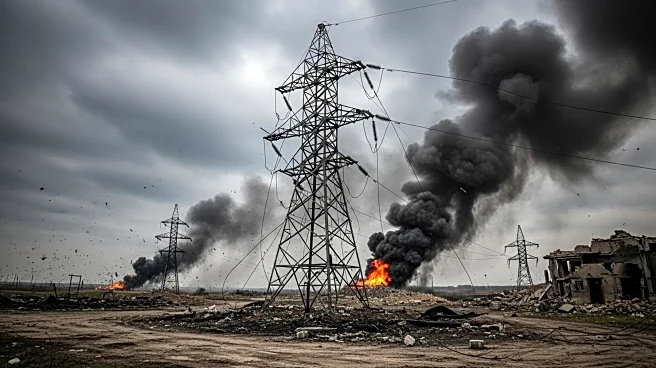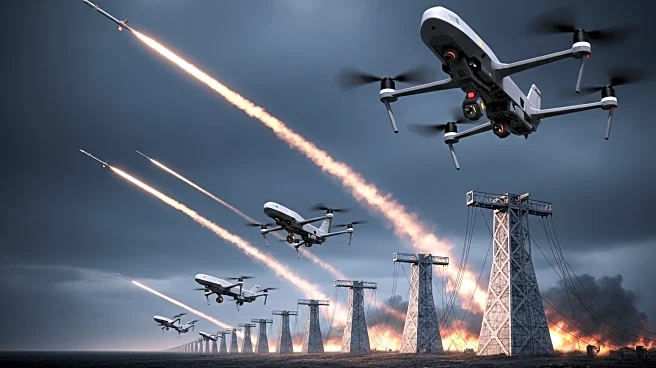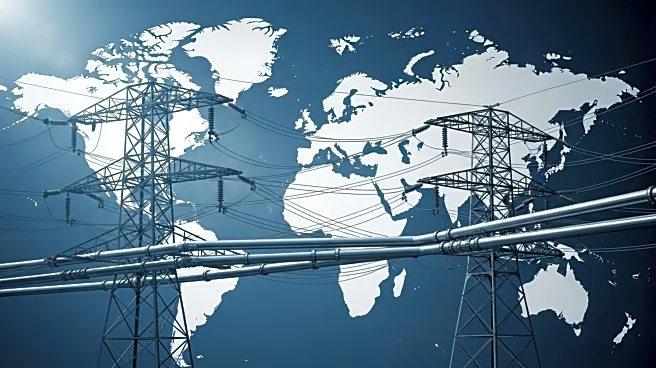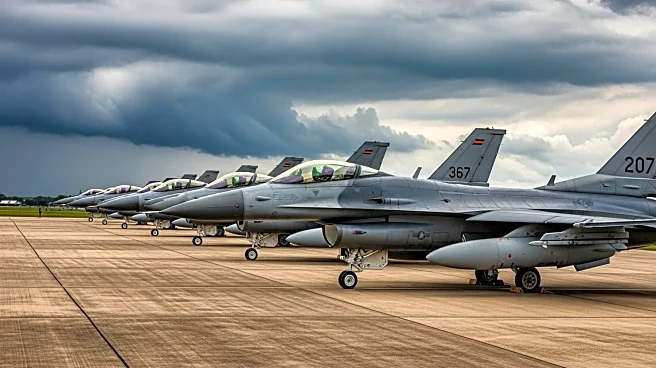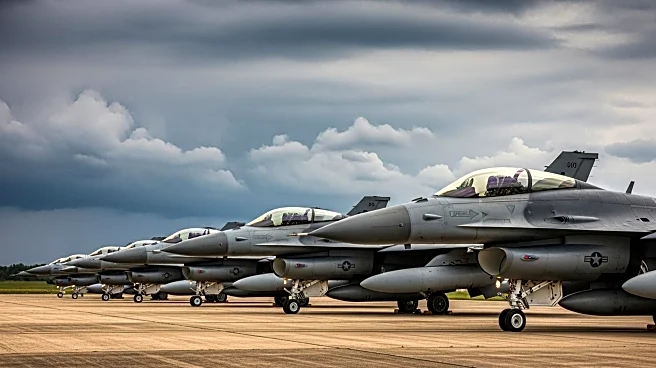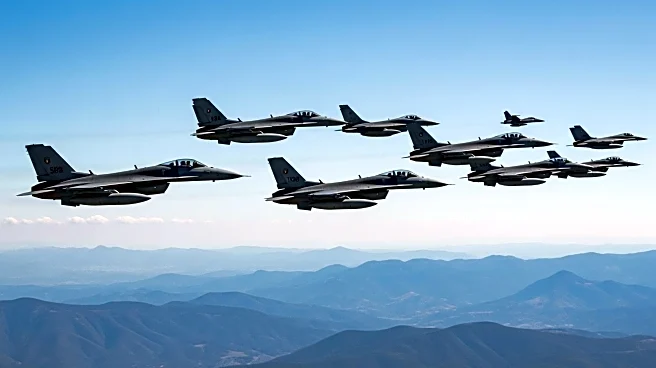What's Happening?
Unmanned ground vehicles (UGVs) have significantly influenced military strategies since the onset of Russia's aggression against Ukraine. These vehicles, categorized into combat, explosive ordinance disposal, intelligence, surveillance, reconnaissance, and logistics, are experiencing rapid growth, with a projected compound annual growth rate exceeding 6% over the next decade. The combat and logistics segments are particularly expanding, driven by the need to minimize personnel exposure to hazardous environments. In 2025, Ukraine aims to deliver 15,000 UGVs, a substantial increase from 2,000 in 2024, supported by a burgeoning domestic industry comprising 40 companies producing over 200 UGV variants. This development underscores the strategic importance of UGVs in modern warfare, as military leaders globally reassess their roles in future conflicts.
Why It's Important?
The increasing reliance on UGVs marks a pivotal shift in military operations, with significant implications for global defense strategies. The U.S. and other major powers are heavily investing in the UGV market, which is anticipated to double in size by 2035, reaching a global value of $1.35 billion. This trend highlights the transition of UGVs from optional assets to essential components of military arsenals. The advancements in UGV technology, including AI, batteries, and sensors, promise enhanced capabilities, such as extended range and stealth, which are crucial for modern warfare. The integration of UGVs into military operations could reduce personnel risks and operational costs, offering strategic advantages in conflict zones.
What's Next?
As the UGV market continues to expand, further innovations are expected, particularly in AI and sensor technologies, which will enhance the operational effectiveness of these vehicles. The development of UGV swarms capable of attacking personnel and infrastructure is anticipated, potentially revolutionizing ground combat tactics. Military forces worldwide are likely to increase their investments in UGVs, integrating them into existing military frameworks to enhance operational efficiency and safety. The ongoing conflict in Ukraine serves as a testing ground for these technologies, providing valuable insights that will shape future military strategies.
Beyond the Headlines
The ethical implications of deploying UGVs in warfare are significant, raising questions about the automation of combat and the potential for reduced human oversight in military operations. The shift towards unmanned systems may also influence global military doctrines, prompting a reevaluation of traditional combat roles and strategies. As UGVs become more prevalent, the need for international regulations and agreements on their use will become increasingly important to prevent misuse and ensure accountability in military engagements.

